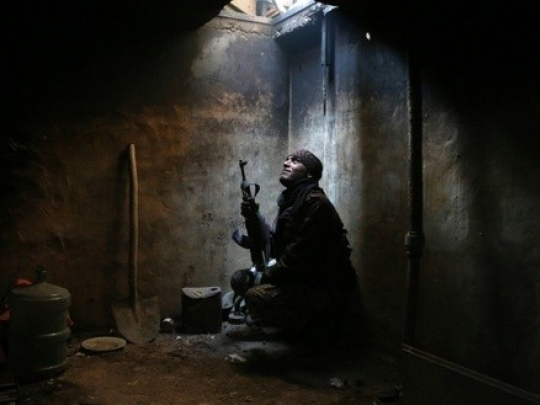The Syrian crisis in figures

Syria's war has killed more than 260,000 people, uprooted more than half the population and left the country in ruins since it erupted nearly five years ago.
Key figures follow on the conflict that began with peaceful protests for reform in March 2011, but escalated into an all-out civil war drawing foreign jihadists and foreign intervention after a brutal crackdown on dissent.
CASUALTIES
The Syrian Observatory for Human Rights, which relies on a large network of sources across the country, says 260,758 people were killed between March 2011 and December 31, 2015, most of them combatants.
The fatalities included more than 76,000 civilians.
The toll excludes thousands who have disappeared, notably in Syria's infamous jails, and the hundreds of loyalists who have gone missing at the hands of rebels and jihadist groups, including the so-called Islamic State.
An Observatory toll published in March 2015 said nearly 13,000 people died of torture in regime prisons since the start of the conflict, while more than 200,000 have been detained.
A Syrian aid group in January denounced the incessant bombing of medical facilities in Syria, where 177 hospitals have been destroyed and nearly 700 health workers killed since 2011.
REFUGEES AND DISPLACED

In Syria, which counted 23 million inhabitants before the conflict, 13.5 million people have been displaced, according to the UN on January 12, 2016.
Some 486,700 are currently living in regions besieged by the army or by rebels, the UN says.
Dozens have died there from malnutrition or from lack of medical assistance, and 4.7 million have fled to neighbouring countries.
"It is the biggest population of refugees for a single conflict in a generation," the UN High Commissioner for Refugees said in July 2015.
Turkey has become the biggest host country for Syrian refugees, with between two and 2.5 million on its soil. Only 250,000 of them live in camps, with the rest in urban areas.
Nearly 1.2 million have taken refuge in Lebanon, according to official sources. More than two thirds of these are in "extreme poverty," according to the UN.
Roughly 630,000 have taken refuge in Jordan, according to the UNHCR, but the authorities there put their number at more than a million. Some 225,000 Syrians have taken refuge in Iraq and 137,000 in Egypt.
The refugees are mired in poverty, health problems and growing tensions with local communities where they live in makeshift camps and extremely difficult conditions.
While a vast majority of refugees remain in the region, an increasing number make the perilous journey to Europe, at the hands of networks of traffickers.
ECONOMIC CONSEQUENCES

Experts say the conflict has set Syria's economy back by three decades, with almost all its revenues cut off and most of the infrastructure destroyed.
The economy has gone through a massive de-industrialisation as enterprises close, people go bankrupt, and amid looting and destruction.
Exports have plunged by 90 percent since the beginning of the revolt, according to a senior official, while the country is also hit by severe international sanctions.
According to the oil minister, direct and indirect losses in the oil and gas sector come to $58 billion (53 billion euros).
In March 2015, a coalition of 130 non-governmental organisations said Syria is living almost without electric light, with 83 percent of lighting no longer working because of the war.
- Source : Al-Monitor















